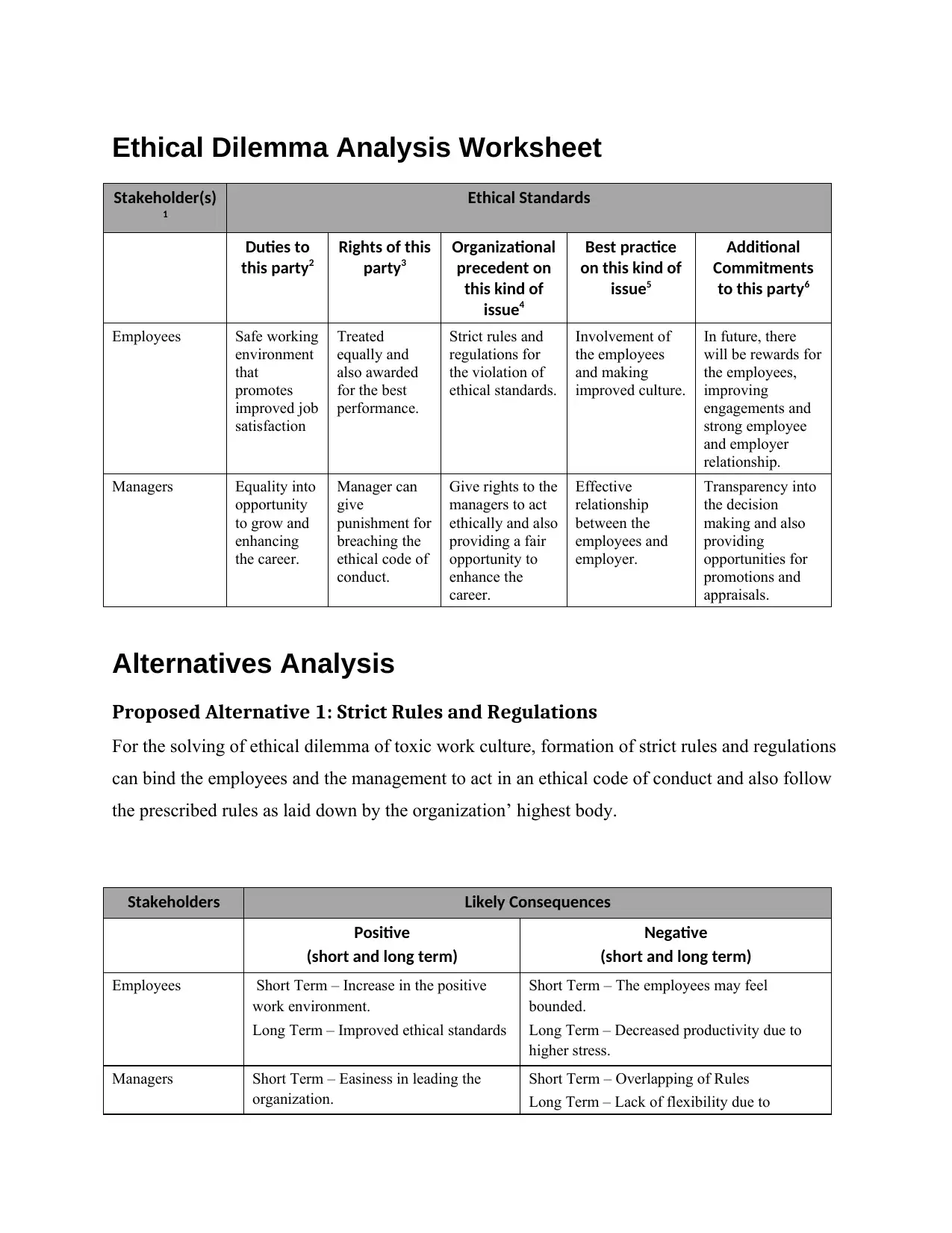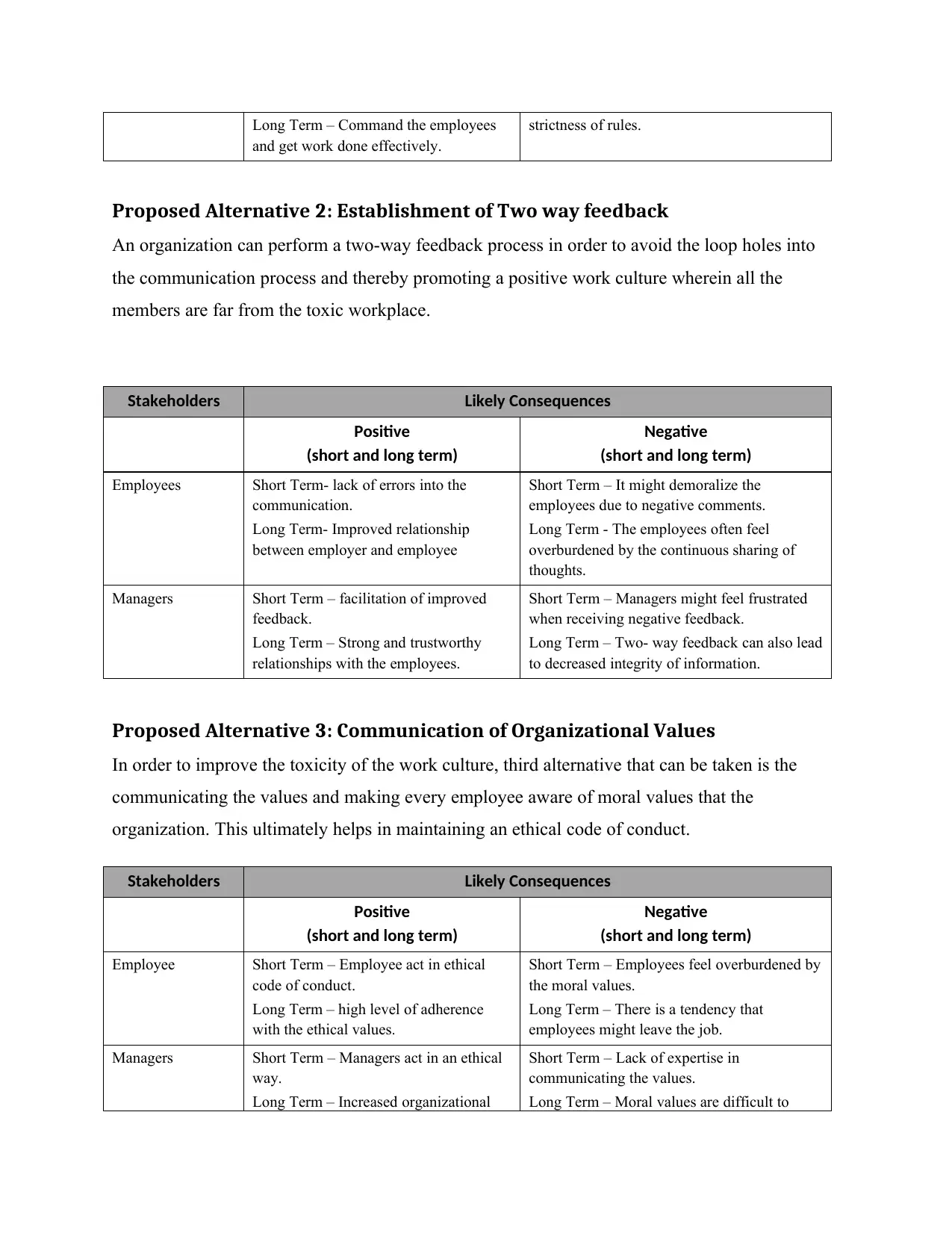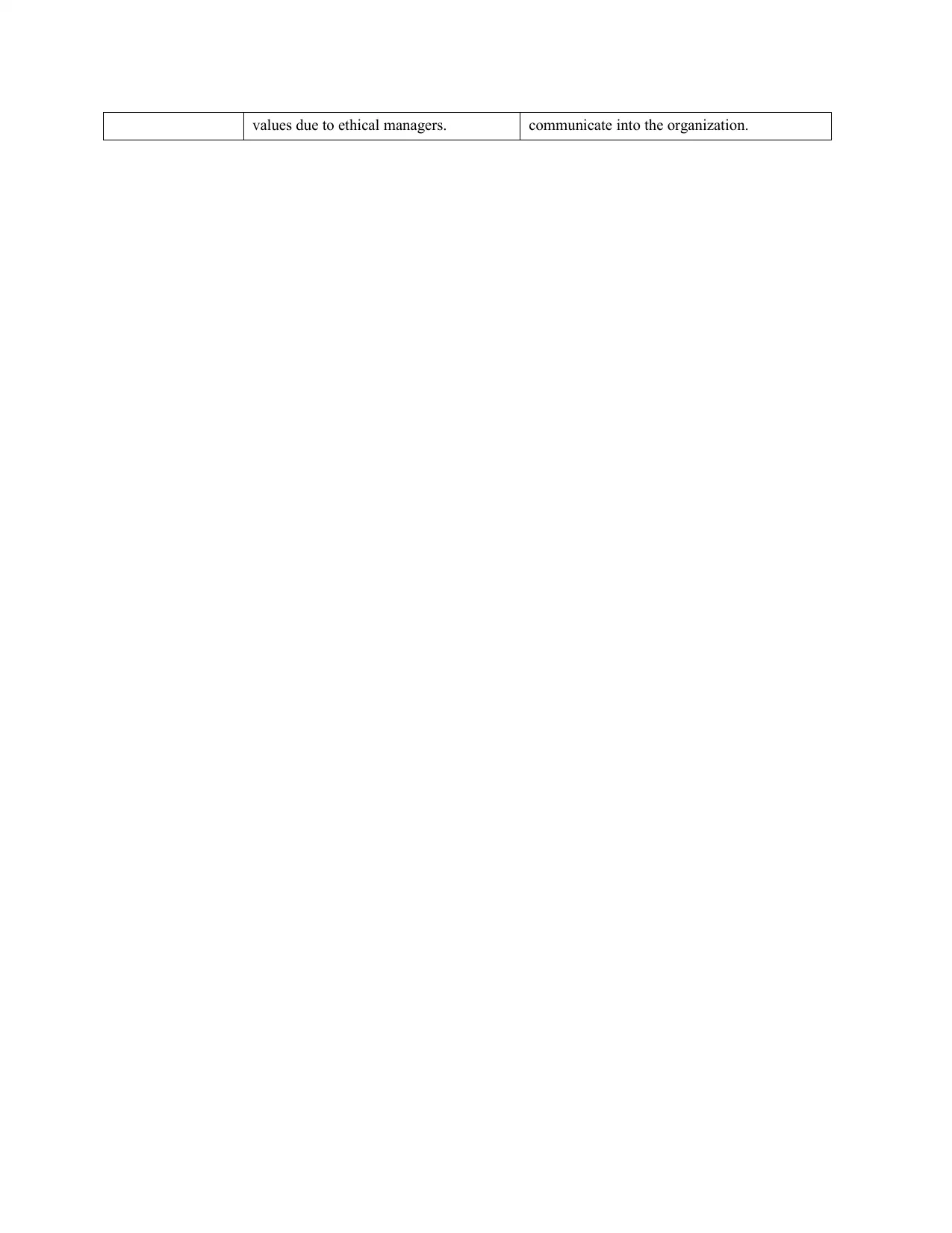Assignment 1: Ethical Dilemma Analysis Worksheet - BUSN 6011
VerifiedAdded on 2022/09/30
|3
|633
|117
Homework Assignment
AI Summary
This assignment presents an ethical dilemma analysis worksheet, addressing a case study in leadership ethics. The worksheet guides the analysis of an ethical dilemma by exploring the involved stakeholders, their ethical standards, duties, and rights. It considers organizational precedents and best practices to evaluate the dilemma. The analysis includes the exploration of potential solutions, each of which is assessed by the impact on stakeholders. The assignment uses a structured framework to evaluate the consequences of each proposed solution, which includes the identification of positive and negative outcomes in the short and long term for various stakeholders, such as employees and managers. The goal is to promote a transparent and thorough approach to resolving ethical challenges within an organization.
1 out of 3










![[object Object]](/_next/static/media/star-bottom.7253800d.svg)